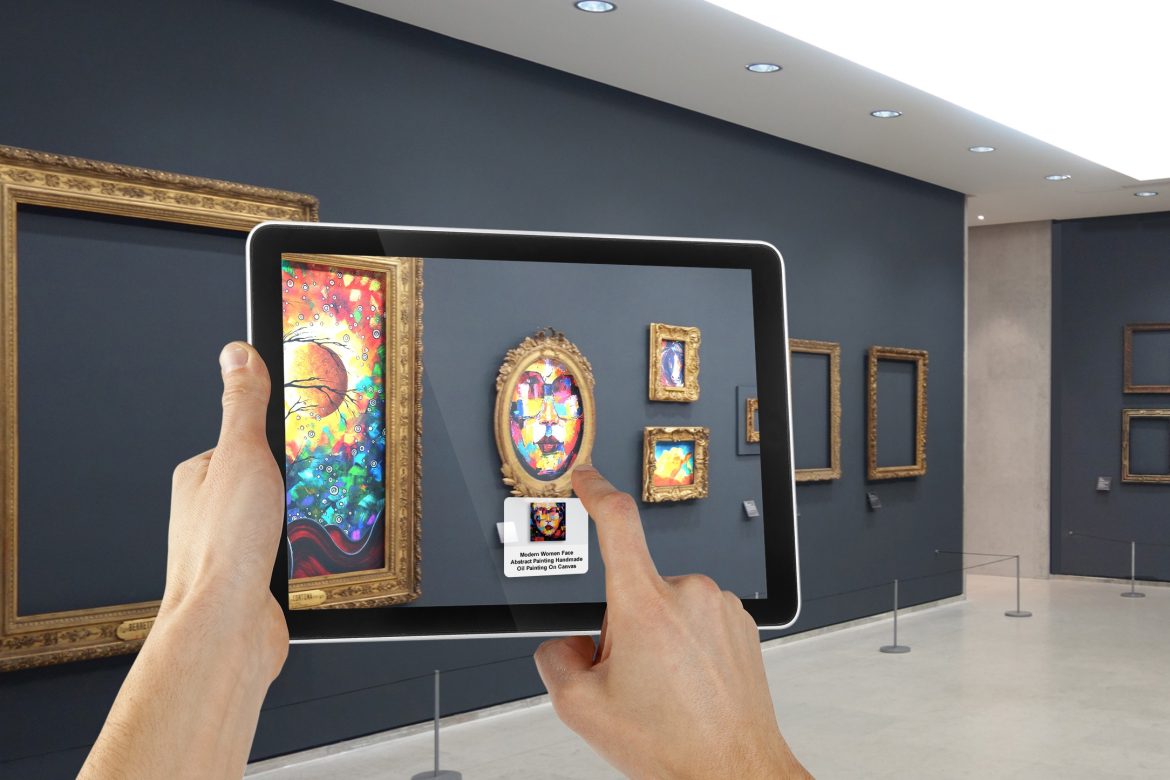Museums and art galleries have long been revered as spaces where visitors can engage with history, culture, and artistic expression. In recent years, the integration of augmented reality (AR) technology has revolutionized the way patrons interact with exhibits and artwork. This article explores the profound impact of augmented reality in museums and art galleries, shedding light on the transformative experiences it offers to visitors and the opportunities it presents for curators and artists alike.
Understanding Augmented Reality
Augmented reality is a technology that overlays digital information, such as images, videos, and 3D models, onto the real world, typically through the use of smartphones, tablets, or AR glasses. By blending the physical and digital realms, AR enhances the viewer’s perception and understanding of their surroundings.
1. Marker-Based AR: This form of AR relies on visual markers, like QR codes or images, to trigger digital content when viewed through an AR device or app.
2. Location-Based AR: Location-based AR uses GPS and other sensors to deliver contextually relevant information based on the user’s physical location.
Transforming the Museum Experience
Augmented reality has breathed new life into museums and art galleries, enhancing the visitor experience in various ways.
1. Interactive Exhibits: AR allows visitors to interact with exhibits in unprecedented ways, from virtually restoring ancient artifacts to exploring anatomical details in natural history specimens.
2. Immersive Storytelling: Museums can use AR to create immersive narratives, guiding visitors through historical events or providing insights into the creative process behind artworks.
Engaging with Artwork
Art galleries have also embraced augmented reality to foster a deeper connection between viewers and artwork.
1. Digital Overlays: AR apps can provide additional information, such as artist biographies, historical context, or interpretations, when users view specific artworks through their devices.
2. Virtual Exhibitions: AR enables artists to create virtual exhibitions, allowing audiences worldwide to experience their work without physical constraints.
Expanding Accessibility
One of the most significant benefits of AR in museums and galleries is its potential to increase accessibility.
1. Inclusive Experiences: AR can cater to diverse audiences, including individuals with disabilities, by offering alternative sensory experiences and accessible content.
2. Multilingual Interpretation: AR apps can provide content in multiple languages, making museums and galleries more accessible to international visitors.
Challenges and Considerations
While augmented reality holds great promise, it is not without its challenges and considerations.
1. Technical Barriers: Visitors may face technical challenges, such as limited device compatibility or the need to download specific apps.
2. Content Quality: The success of AR experiences depends on the quality and relevance of the digital content, which must align with the curatorial intent.
Future Possibilities
The future of augmented reality in museums and art galleries is filled with exciting possibilities.
1. Holographic Exhibits: Advancements in AR hardware may lead to holographic exhibits, allowing viewers to interact with lifelike digital representations of artifacts and artwork.
2. Enhanced Education: AR can become a powerful educational tool, offering engaging and informative experiences for students and lifelong learners.
Conclusion
Augmented reality has ushered in a new era of engagement and accessibility in museums and art galleries. It transcends physical boundaries, enriches storytelling, and creates inclusive experiences for all visitors. As technology continues to advance, the potential for AR in cultural institutions is limitless. It is an invaluable tool for preserving and sharing our collective heritage, igniting curiosity, and fostering a deeper appreciation for art and culture. The integration of augmented reality in museums and art galleries is a testament to the evolving role of technology in enhancing our understanding and appreciation of the world around us.
